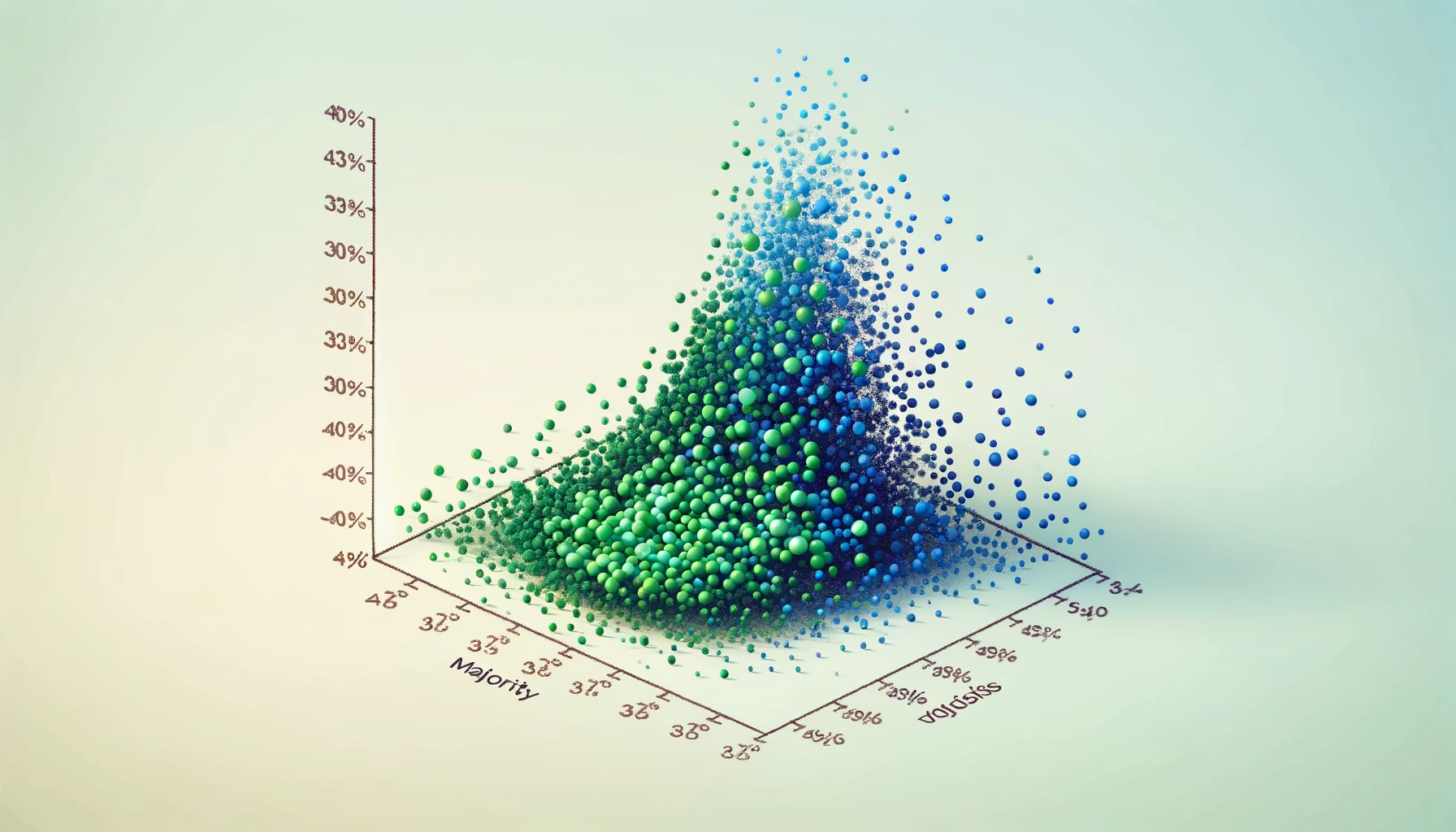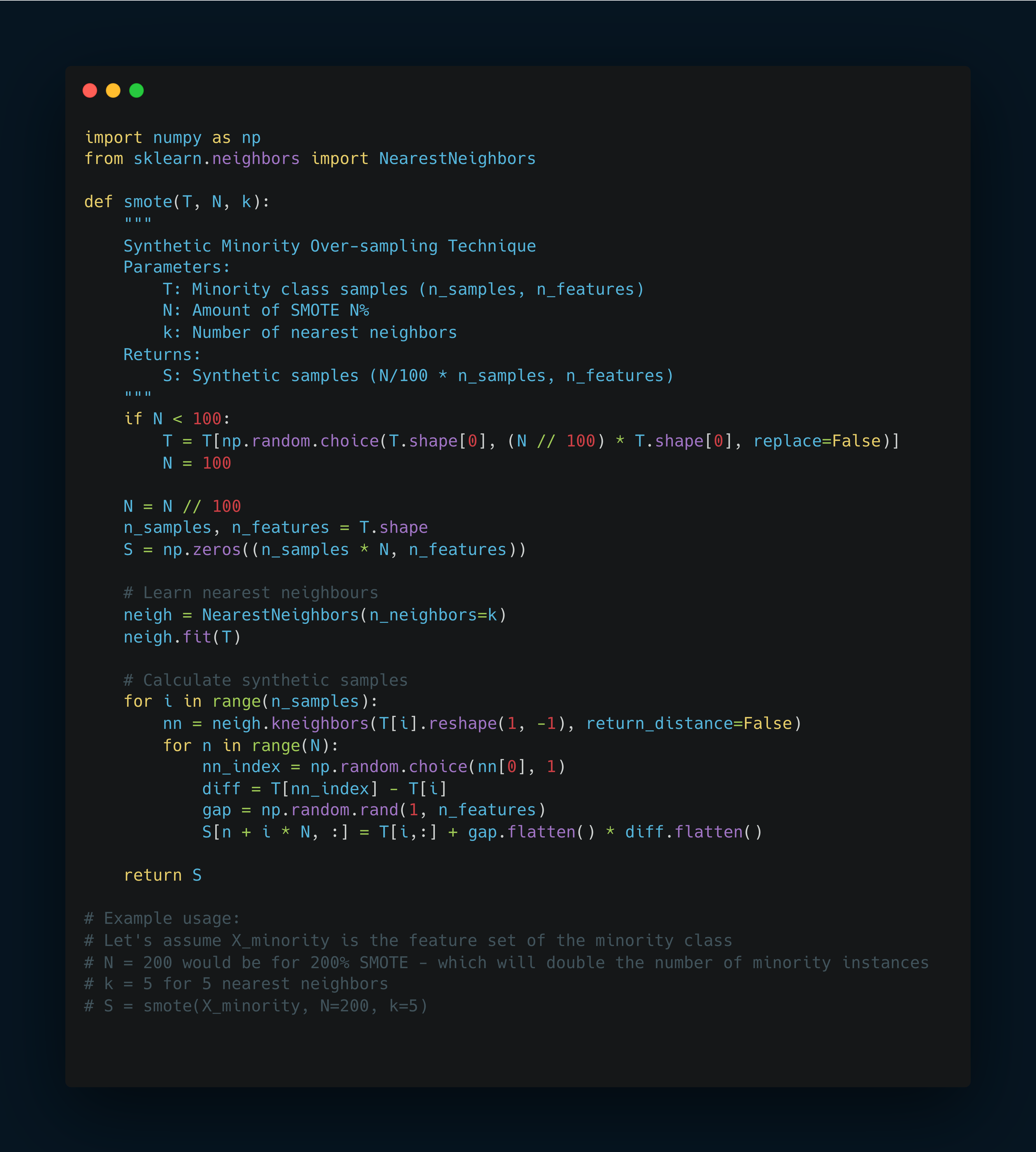How to Tackle Unbalanced Data with SMOTE: A Comprehensive Guide
 Juan Carlos Olamendy
Juan Carlos Olamendy
Introduction
Have you ever faced the challenge of training a machine learning model with imbalanced data?
If so, you know the struggle of achieving accuracy across different classes.
This tutorial dives into the Synthetic Minority Oversampling Technique (SMOTE), exploring its benefits and drawbacks.
I'll provide you with valuable tips and share best practices in handling unbalanced data.
Why Is SMOTE Required?
In machine learning, particularly in classification tasks, balanced datasets are ideal.
They allow algorithms to learn and generalize effectively from a similar number of examples in each category.
However, real-world data often presents an imbalance.
Imbalanced Data
In many real-life scenarios, datasets are imbalanced.
One or more classes have significantly fewer instances than others.
This imbalance can be particularly evident in certain fields, like medical diagnosis.
Challenges With Imbalanced Data
When training on imbalanced data, models can develop a bias toward the majority class.
This leads to high accuracy in the dominant class but poor performance in the minority class.
In medical examples, a model might fail to detect rare diseases, focusing on the majority without the condition.
To address this, SMOTE comes into play.
What Is SMOTE?
SMOTE is a data augmentation technique that helps balance class distribution by generating synthetic instances for the minority class.
It's widely used in various applications, like fraud detection and medical diagnosis.
Original Formulation of SMOTE
The original formulation of SMOTE involves generating new data by interpolating between randomly selected instances from the minority class and their neighbors.
Interpolation in SMOTE
In SMOTE, interpolation is a random process. It involves selecting a real-data instance, a neighbor, and then generating a point between them, creating a more balanced dataset.
Advantages and Disadvantages of SMOTE
SMOTE, like any technique, has its pros and cons.
Algorithm
The code iterates through all points in the minority class and for each point, it calculates the k-nearest neighbors.
From these neighbors, it then randomly selects one and generates a synthetic sample by interpolating between the minority class point and its randomly selected neighbor.
This process is repeated N times for each minority class sample, where N is the oversampling percentage divided by 100.
It uses the NearestNeighbors class from scikit-learn to find the k-nearest neighbors of each sample in the minority class.
Finally, the function returns the array S, which contains all the synthetic samples generated by the algorithm.

Advantages
Improves Model Performance: By balancing classes, SMOTE enables more effective learning of patterns.
Reduces Overfitting: It helps in building models that generalize better to unseen data.
Supports Various Classifiers: Works with many classifiers like decision trees and neural networks.
Flexible and Adjustable: Allows for customization in oversampling and sample characteristics.
Ease of Implementation: Available in various programming languages and libraries.
Disadvantages
Ignores Majority Class: SMOTE focuses solely on the minority class.
Potential for Increased Noise: Can inadvertently introduce noise, impacting performance.
Less Effective in High-Dimensional Spaces: Struggles in complex pattern recognition in high-dimensional data.
Conclusion
SMOTE is a valuable tool in the arsenal of machine learning techniques, especially for handling unbalanced data.
It enhances learning and generalization capabilities by addressing class imbalance.
However, like any technique, it requires careful consideration of its application and potential pitfalls.
If you like this article, please share it with others ♻️
That would help a lot ❤️
And feel free to follow me for more like this.
Subscribe to my newsletter
Read articles from Juan Carlos Olamendy directly inside your inbox. Subscribe to the newsletter, and don't miss out.
Written by

Juan Carlos Olamendy
Juan Carlos Olamendy
🤖 Talk about AI/ML · AI-preneur 🛠️ Build AI tools 🚀 Share my journey 𓀙 🔗 http://pixela.io